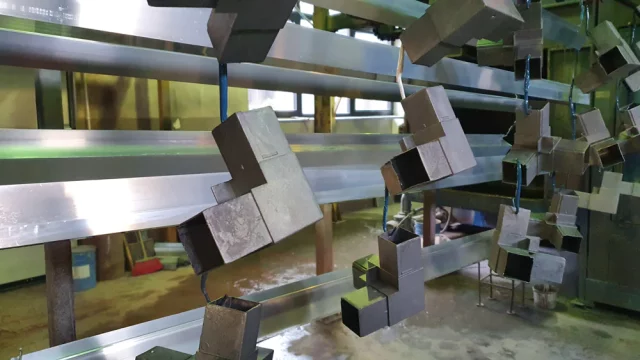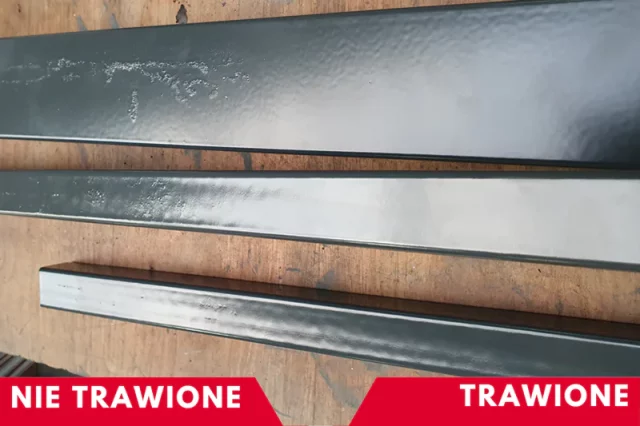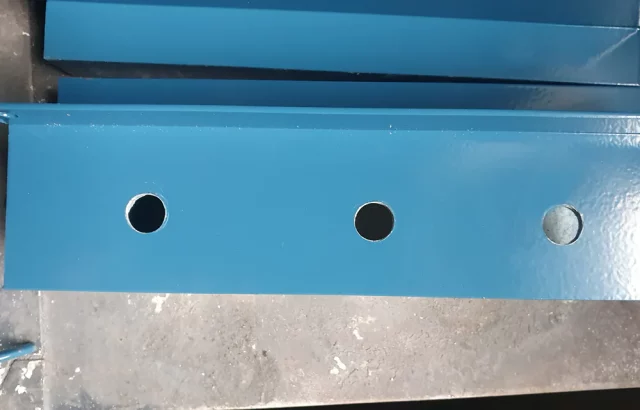When painting surfaces, many mistakes can be made in both the preparation of the metal surface to be painted and the application of the paint. As a result, the paint film is not perfectly smooth and even, and it degrades or chips quickly. What can be done to avoid mistakes? We will try to explain the most common problems and, because of our company's specialisation in surface preparation, we will focus on this area.

- So-called fish eyes (Fish eyes - oval-shaped depressions in the paint surface which are best visible against the light. They are the result of incorrect surface preparation, such as residues of oils and waxes, parts that have not been fully dried or moisture in the air has accumulated on the surface between drying and varnishing. The most common cases are inaccurate cleaning and degreasing of the surface.
- Countermeasures
- checking the effectiveness of the surface preparation (working parameters - concentration, temperature, cleaning time)
- checking the accuracy of drying (temperature, time) and the possibility of transferring rinse water into the nooks and crannies of the workpieces
- preventing condensation from forming in the air - avoiding changes in room temperature or humidity.
- Countermeasures
- Incomplete cleaning of the surface with white corrosion from galvanised components, leaves lumps of zinc oxides and, as a result, an uneven paint finish. In addition, there is a risk of outgassing and subsequent needlepoint.
- Countermeasures
- Mechanical removal of white corrosion by gentle grinding or blasting (e.g. corundum). These methods are time-consuming and can damage the surface of the zinc.
- chemical etching of the oxide layer.
- accepting only good quality material
- Countermeasures

- Another example is the so-called needlepoint (pin-holing), which are small cavities formed by gas bubbles. They resemble pin pricks. This is another result of inadequate cleaning of the surface or the release of gases trapped in the pores of either the hot-dip galvanised coating or the corrosion layer. It can also be caused by too much moisture or oil content in the compressed air.
- Countermeasures
- checking the effectiveness of the surface preparation (working parameters - concentration, temperature, cleaning time)
- prior degassing of the component by heating it at approx. 220-230 °C
- checking the efficiency of the dryer on the compressed air system or its installation or additional filters.
- Countermeasures
- Surface inclusions - pollutants from the air, from transport chains or stirred up dust during internal transport.
-
- The only way is to keep the shop floor tidy. We understand perfectly well how difficult a condition 😉 on the other hand, not everyone needs a so-called clean room.
-
- At the very end we will write about poor adhesion (adhesion) of the paint film. The most common causes are improper chemical treatment of the surface, overheating of the paint or possibly too short a polymerisation.
- Countermeasures
- checking the effectiveness of the surface preparation (working parameters - concentration, temperature, cleaning time)
- follow the recommendations of powder paint manufacturers regarding temperatures and polymerisation times.
- verify the temperature given by the cooker controller - check the temperature on the elements in the cooker with a pyrometer.
- Countermeasures

In paint defects directly related to surface preparation, our products will be able to solve the problem. In addition to perfect surface preparation and even shortening the entire process, KairoSurf products allow the on energy savings - surface preparation takes place at 25°C. We offer free assistance in implementation and advice at every stage.



